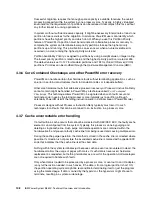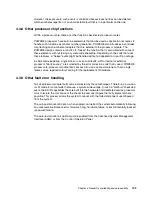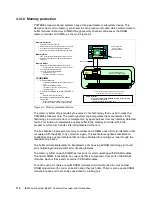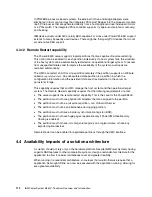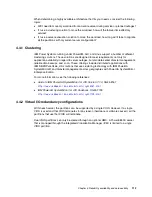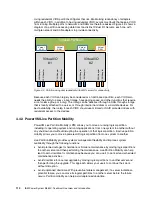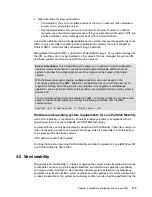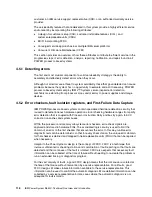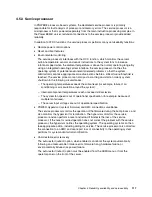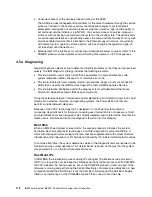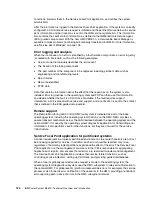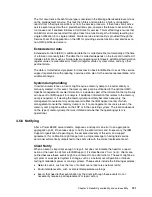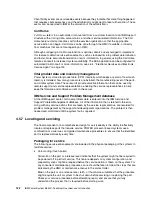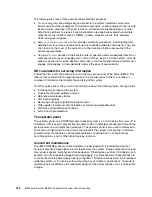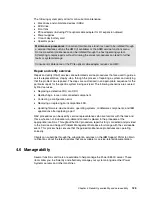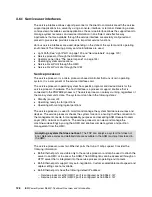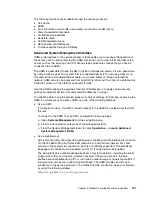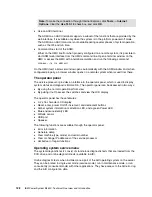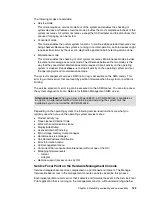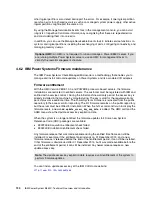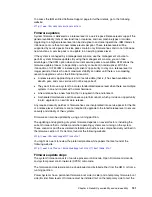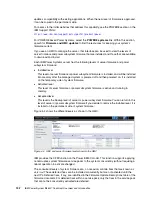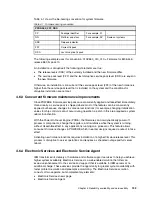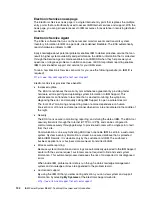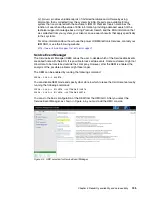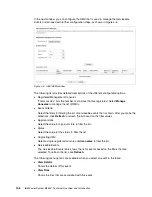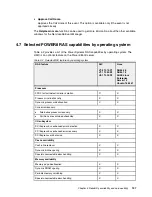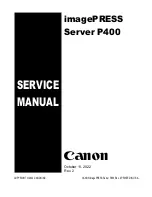
122
IBM Power System E850C: Technical Overview and Introduction
Client Notify events are serviceable events because they indicate that something happened
that requires client awareness, and the administrator might want to take further action. These
events can be reported to IBM at the discretion of the administrator.
Call Home
Call Home
refers to an automatic or manual call from a customer location to an IBM Support
structure with error log data, server status, and other service-related information. The Call
Home feature starts procedures within the service organization so that the appropriate
service action can begin. Call Home can be done through the HMC if available, or directly
from machines that are not managed by an HMC.
Although configuring a Call Home function is optional, clients are encouraged to implement
this feature to obtain service enhancements, such as reduced time to problem determination
and faster, more accurate transmission of error information. In general, using the Call Home
feature can result in increased system availability. The ESA application can be configured for
automated Call Home. For more information, see 4.6.4, “Electronic Services and Electronic
Service Agent” on page 133.
Vital product data and inventory management
Power Systems store vital product data (VPD) internally, which keeps a record of how much
memory is installed, how many processors are installed, the manufacturing level of the parts,
and similar system data. These records provide valuable information that can be used by
remote support and service representatives, enabling the service representatives to help
keep the firmware and software current on the server.
IBM Service and Support Problem Management database
At the IBM Support center, historical problem data is entered into the IBM Service and
Support Problem Management database. All of the information that is related to the error,
along with any service actions that are taken by the service representative, are recorded for
problem management by the support and development organizations. The problem is then
tracked and monitored until the system fault is repaired.
4.5.7 Locating and servicing
The final component of a comprehensive design for serviceability is the ability to effectively
locate and replace parts that require service. POWER processor-based systems use a
combination of visual cues and guided maintenance procedures to ensure that the identified
part is replaced correctly, every time.
Packaging for service
The following service enhancements are included in the physical packaging of the systems to
facilitate service:
Color coding (touch points)
Terracotta on the part or a release lever indicates that the system might not be required to
be powered off to perform service. This feature depends on system configuration, and
preparatory steps might be required before the service action is taken on the system. For
any concurrent maintenance procedures, care should be taken to follow the steps that are
indicated by the HMC or maintenance menus in the correct order.
Blue on the part or on a release lever, latch, or thumb-screw indicates that the procedure
might require the unit or system to be shut down before servicing or replacing the part.
Check your service procedure before attempting repair, and ensure that you fully
understand the process that is required before starting work.
Summary of Contents for E850C
Page 2: ......
Page 36: ...22 IBM Power System E850C Technical Overview and Introduction...
Page 114: ...100 IBM Power System E850C Technical Overview and Introduction...
Page 154: ...140 IBM Power System E850C Technical Overview and Introduction...
Page 158: ...144 IBM Power System E850C Technical Overview and Introduction...
Page 159: ......
Page 160: ...ibm com redbooks Printed in U S A Back cover ISBN 0738455687 REDP 5412 00...

